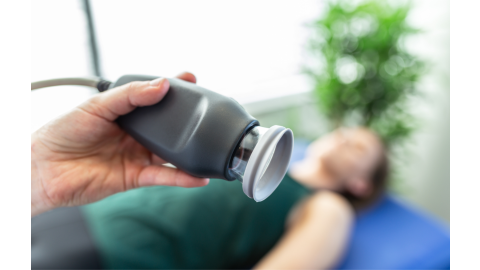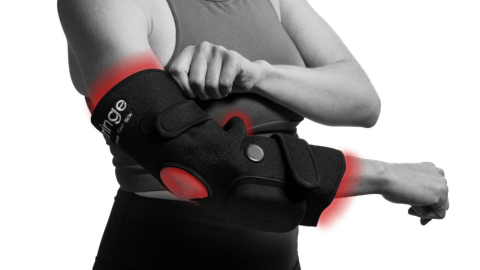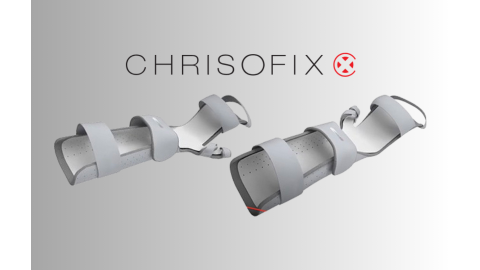Huntington’s disease (HD) is a progressive brain disorder that affects approximately 30,000 people in the U.S.1
HD causes several symptoms that can impact your ability to eat independently. These include involuntary jerking movements (chorea), difficulty swallowing, difficulty focusing on tasks, and forgetfulness.
Some of these symptoms can impact your ability to eat independently. But there are several aids that can help you continue to eat, drink, and get the nutrition you need.
- Dining Aids & Tips for People with Huntington’s Disease
- Dysphagia Aids for People with Huntington’s Disease
- Nutrition and Huntington’s Disease
- Do you have additional questions about living with Huntington’s disease?
Dining Aids & Tips for People with Huntington’s Disease
Eating independently can be hard for people with Huntington’s disease due to difficulties controlling motor functions. This can lead to dropped food, turning into frustration, embarrassment, reduced nutritional intake, and fatigue. In turn, this can turn lead to a loss of interest in food and a withdrawal in social situations.
But there are a variety of dining aids that can help people with coordination problems continue to eat while minimizing chances of spills.
Early Stage
In early stages of HD, certain utensils and cups can make eating and drinking easier and less messy.
Dining Aids
In the early stages of HD, these aids may be helpful:
- Utensils with Thick Handles
- Larger diameter handles are easier to grasp and hold while eating. You can adapt existing utensils using foam tubing or purchase utensils with larger handles.
- Bendable Utensils
- Bendable utensils allow you to change the orientation of the utensil head so that it is easier to get food into your mouth. This is ideal for people whose coordination problems make it difficult to aim while eating.
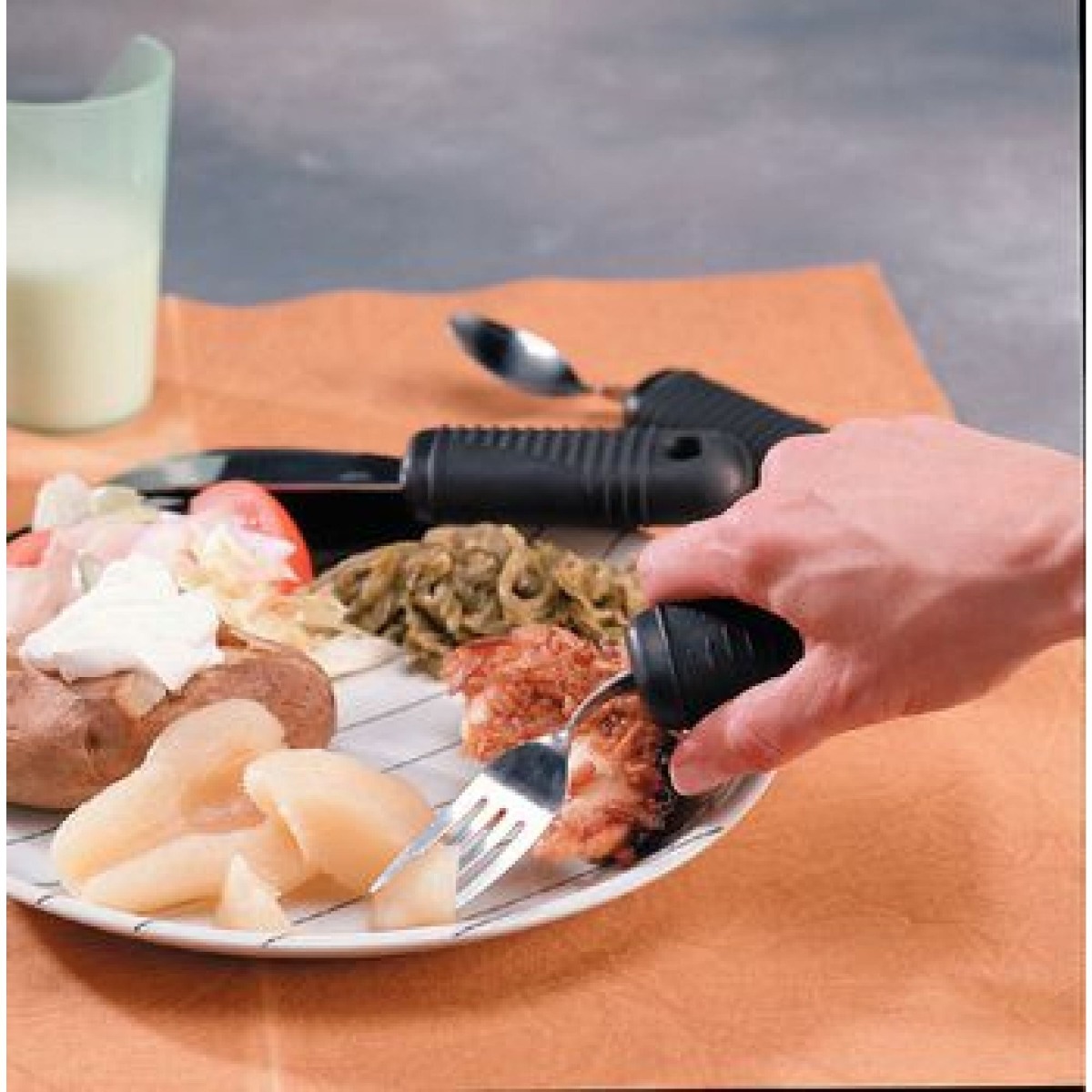
- Weighted Utensils
- Weighted utensils make it easier to tell where the utensil is in your hand. They may also help reduce tremors. There are weighted utensils that have larger grips and weighted options that look more like traditional silverware.
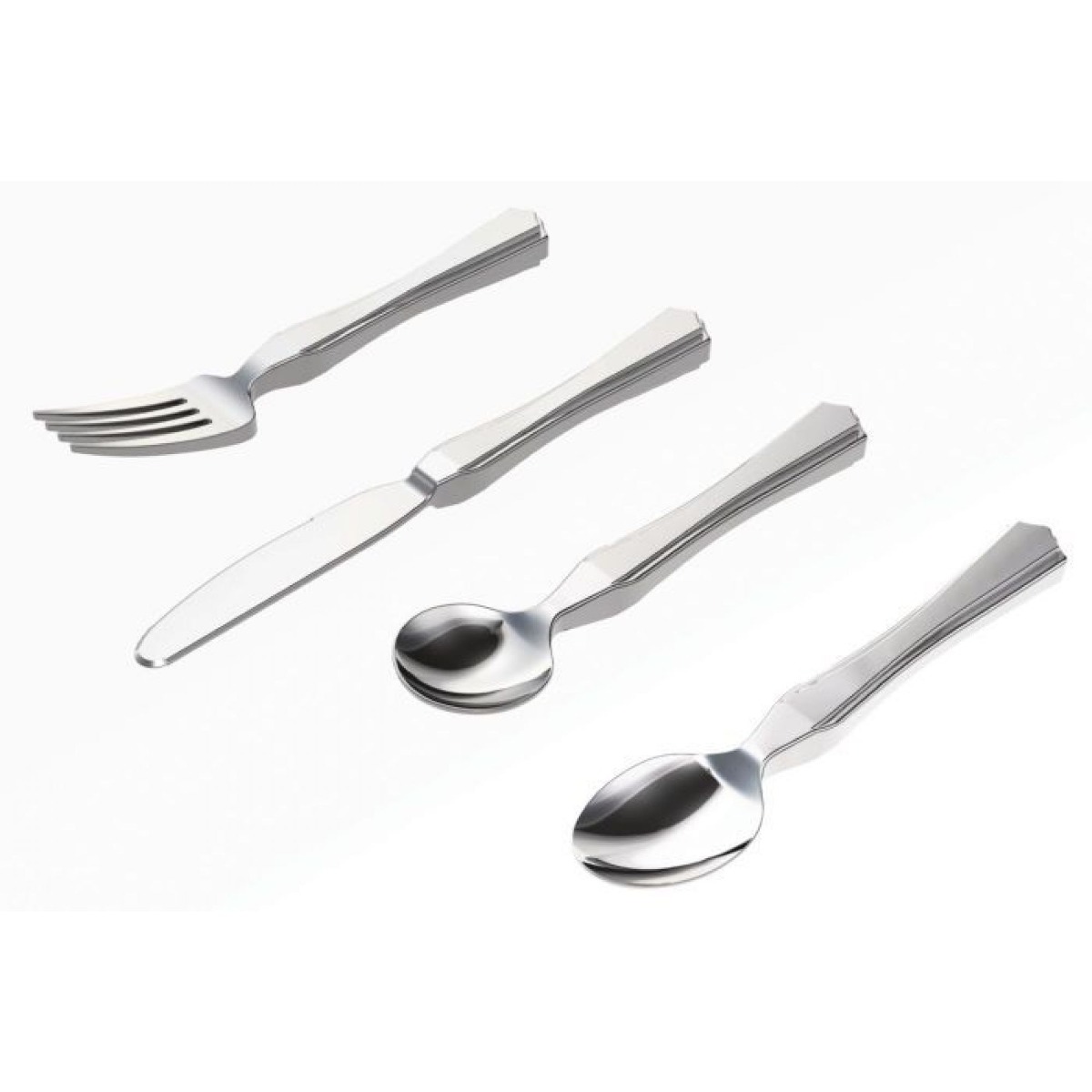
- Plastic Dishes with Edges
- Involuntary movements may cause you to drop dishes. Durable plastic plates and bowls can help you avoid the dangers of broken glass or ceramic. A plastic plate with an inside edge, not only helps avoid broken dishes, but also makes it easier to scoop your food without having it fall off the edge of your plate. You can also buy a plate guard that clips onto an existing plate and helps stop food from spilling over the edge of your plate.
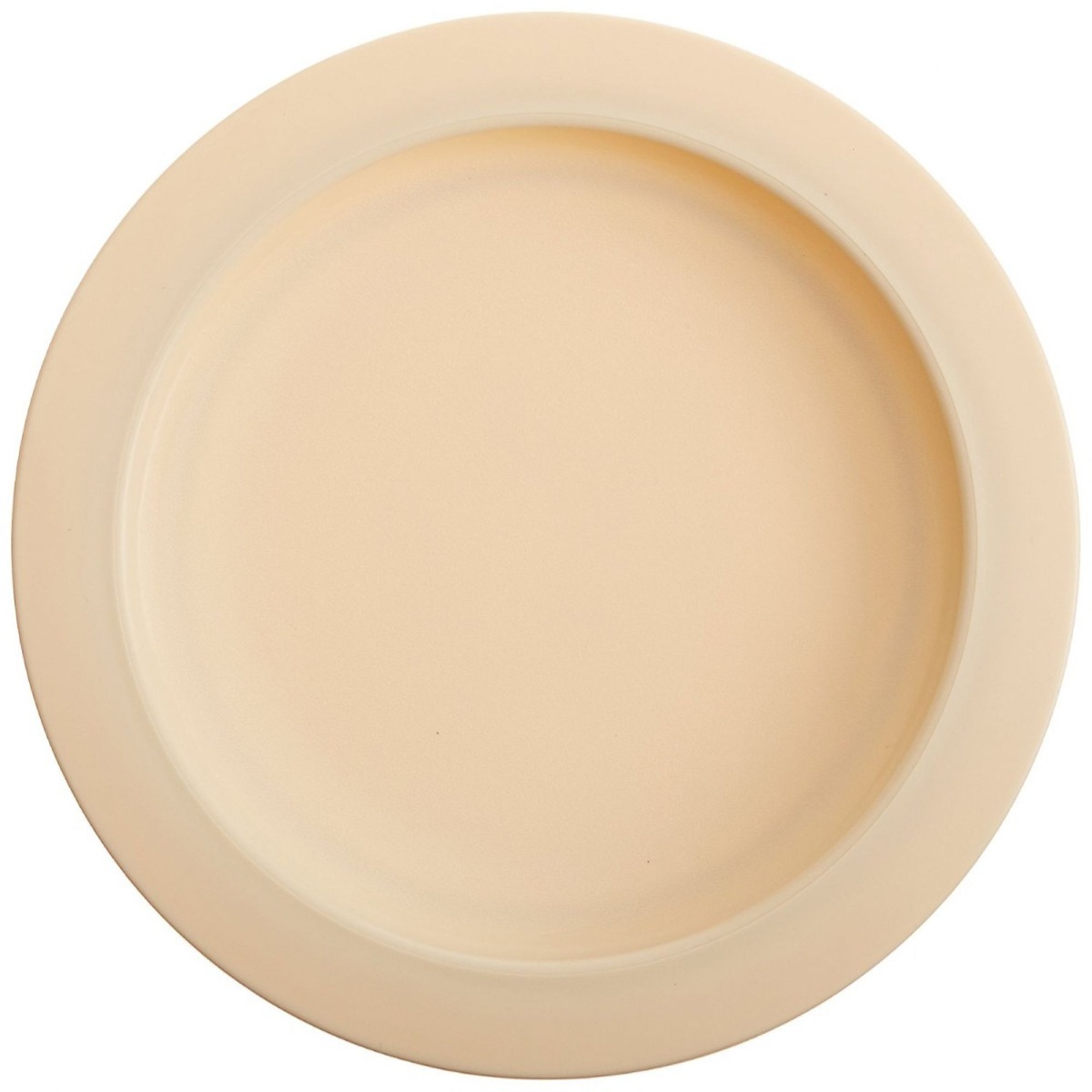
- Adaptive Drinking Cups
- Reduce spills by selecting a cup with a spouted lid and a handle. A lid helps reduce spills, a handle makes the cup easier to hold, and a spout helps limit the amount of liquid coming out of the cup. Spill-proof cups can make it easier to drink without making a mess. There are even cups designed for use while sitting or lying down. Try a regulated drinking cup to limit the amount of liquid dispensed at one time and make drinking easier.
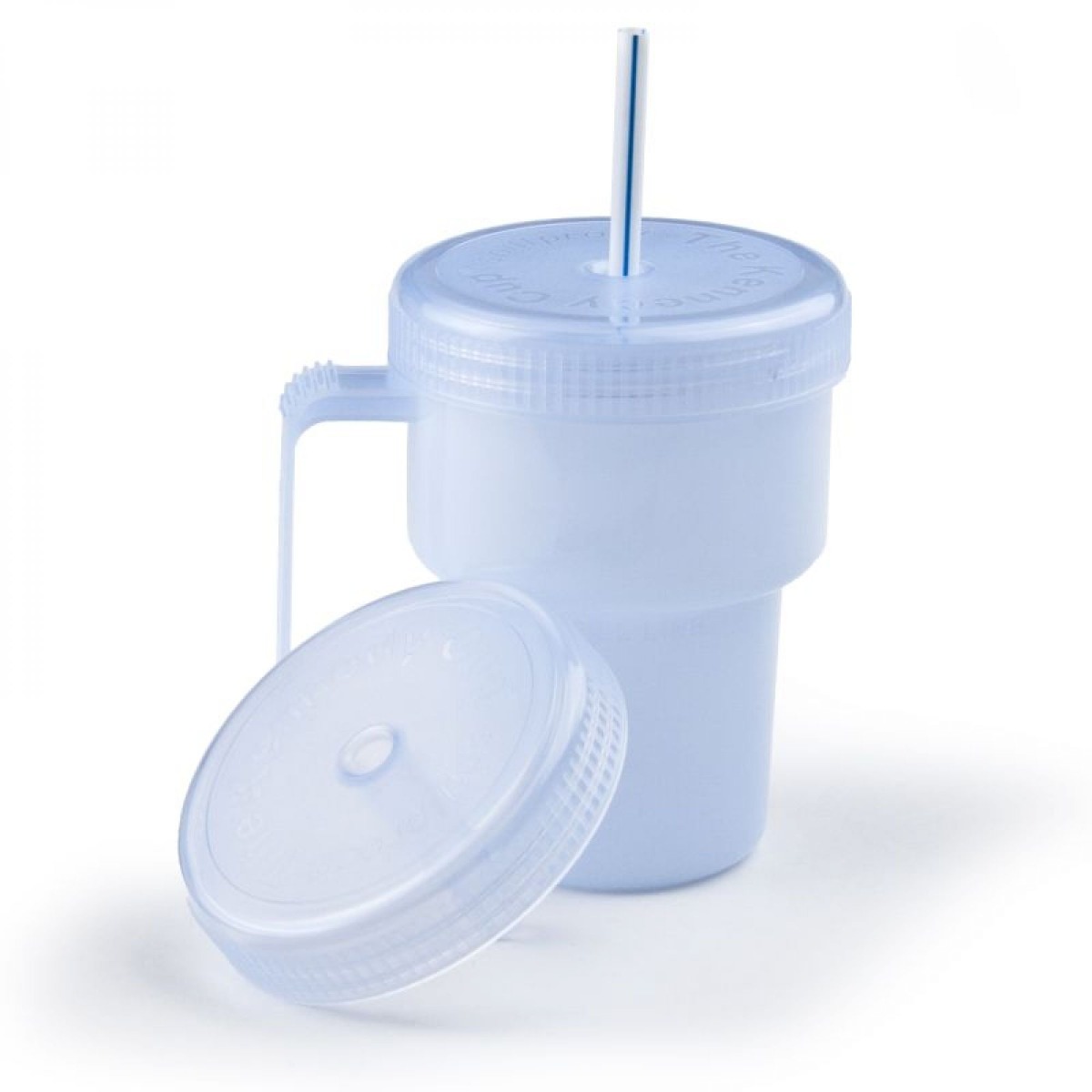
- Dycem Mats
- Chorea may cause movements that push your plate around, making it difficult to eat. Use a non-slip pad, like a Dycem mat, to help keep your plate in place while eating. You can also purchase the matting in bulk to keep plates, cups, mixing bowls, appliances and more in place.
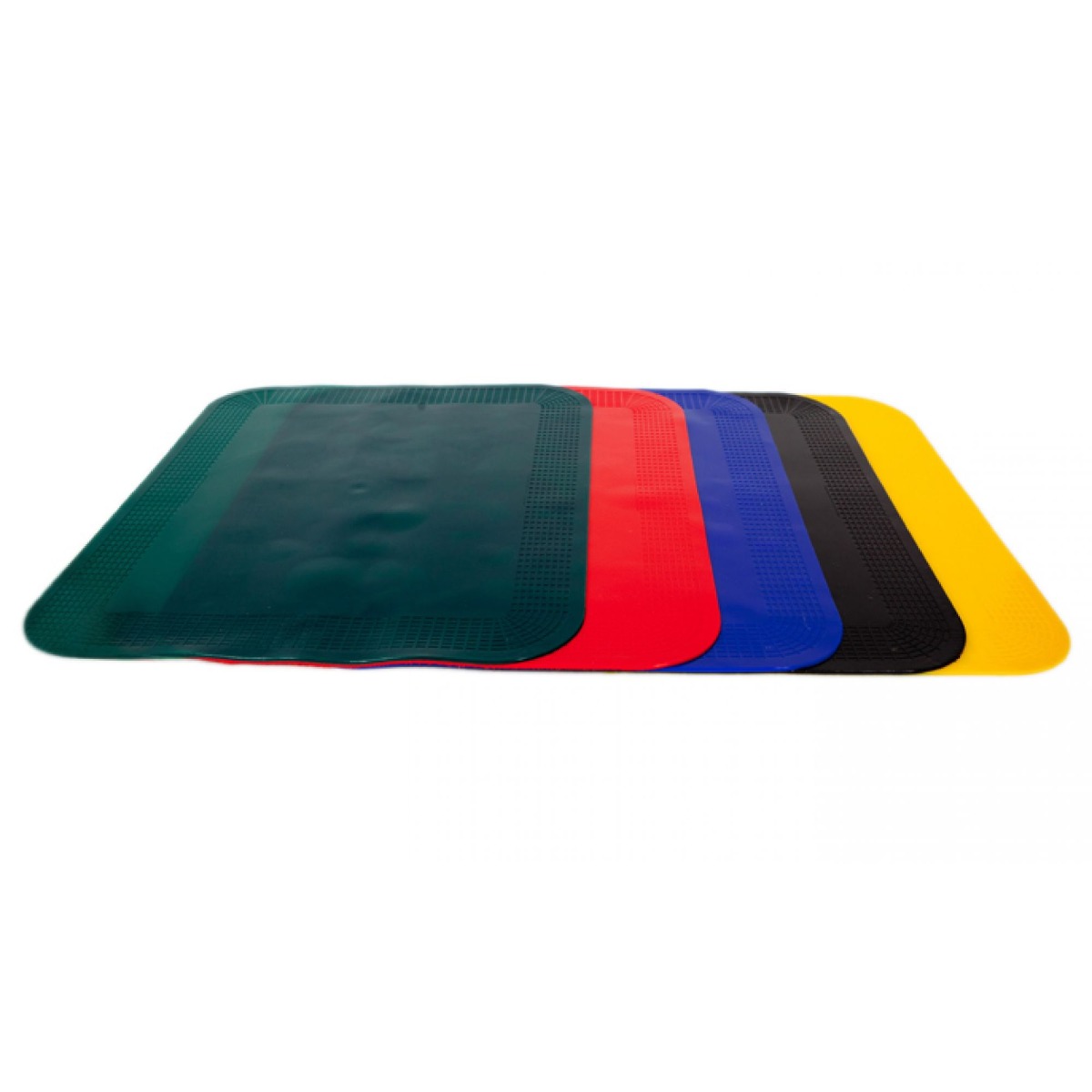
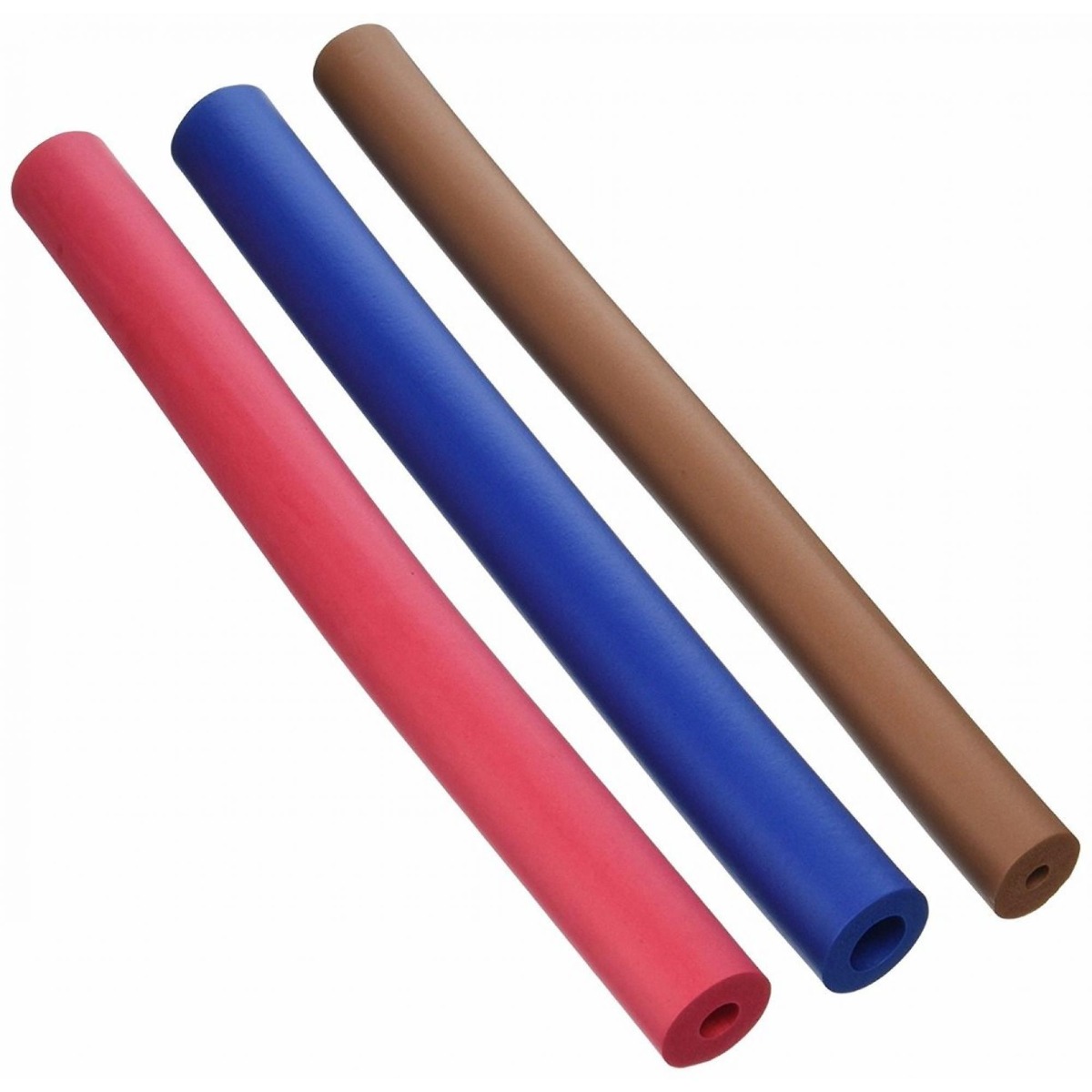
Tips
- Turn off the TV or any music to reduce distractions while eating and improve your concentration
- Eat at the table, not in a recliner or on a couch
- Place your forearms on the table to help reduce arm movements while eating
- Avoid using breakable dishes
- Use adaptive utensils and cups with a lid, handle, and spout
Mid Stage
In the mid stage, additional adaptive aids may be needed to continue eating independently including scoop dishes, food catchers, weighted cups, and other aids.
- Bendable and Weighted Utensils
- You can use utensils that are both bendable and weighted to help make eating your meal easier. They combine the benefits of using weighted utensils to reduce tremors and angled utensils to better aim while eating.
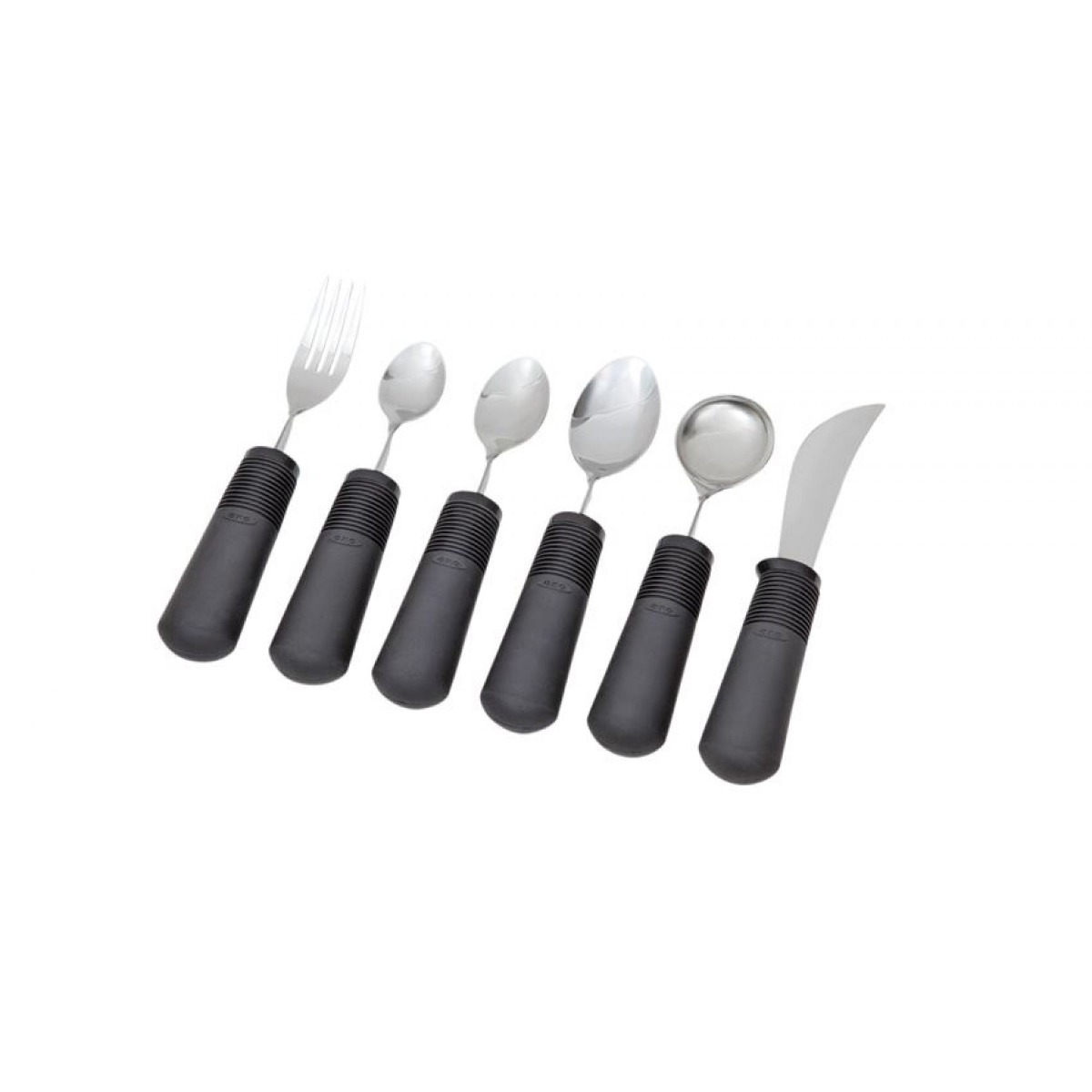
- ELISpoon
- The ELIspoon is a revolutionary aid that uses counter-weights to keep the bowl of the spoon level regardless of arm movement. This makes it a helpful aid for people with chorea caused by Huntington’s disease. It helps stop spills from interrupting mealtime. See the spoon in action below!
- Scoop Dishes and Plates
- During the mid stage of Huntington’s disease, plates with raised edges are still often helpful. Hi-Low scoop plates with non-skid bases have one lower side for easy access and one raised side to scoop against.
- Scoop dishes and scoop bowls can also reduce spills thanks to the one high side which can be used to scoop against without pushing food over the edge.
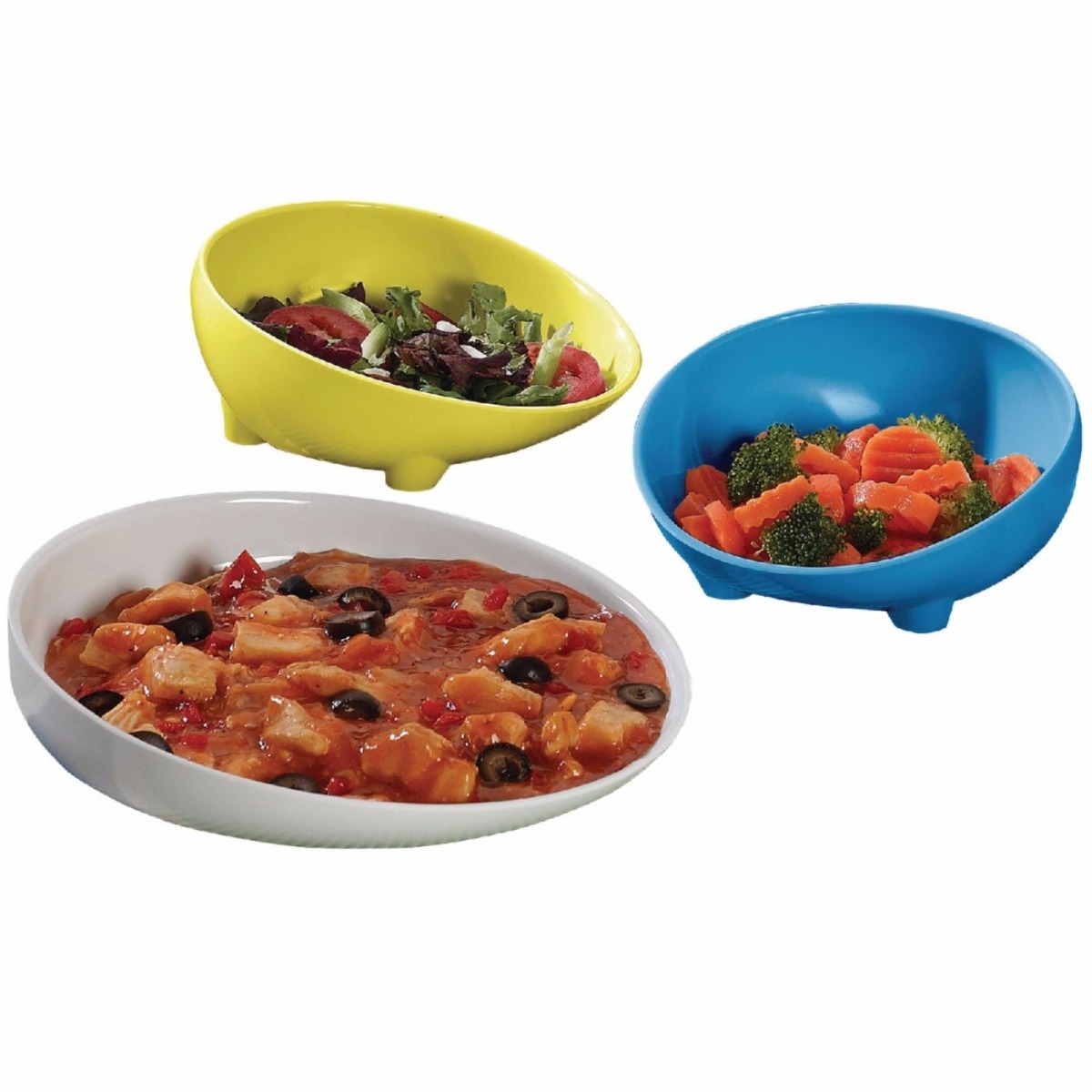
- Utensil Cuff and Bottle Holders
- A utensil cuff has a cuff that wraps around your hand, if you find grasping difficult. The cuff also holds your existing utensil making it easier to eat independently. Similarly the U Drink Adaptable Holder has a handle that slips over your hand and a holder that attaches to a water bottle and most drinking containers to offer support while you drink.
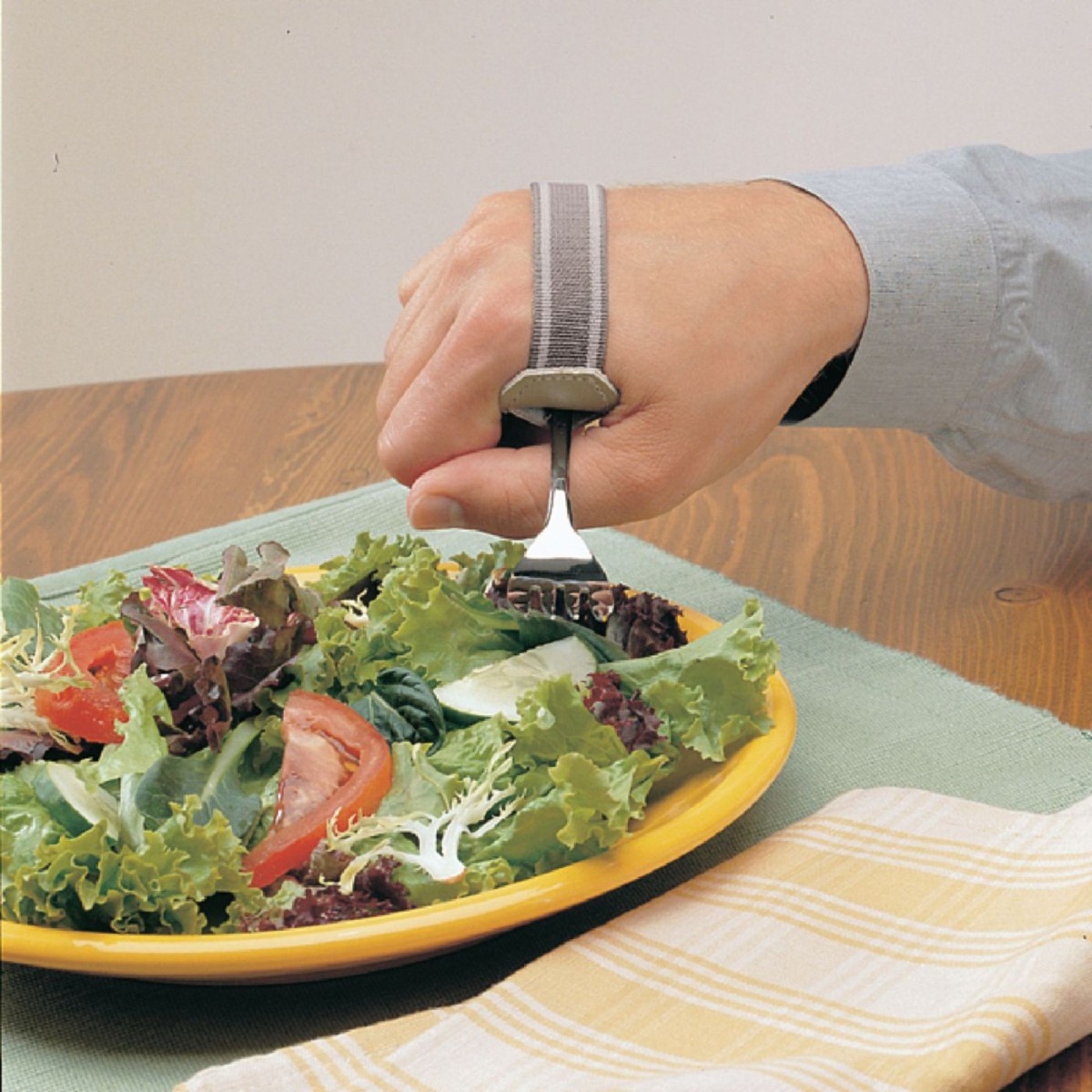
- Food Catchers
- Dropped food can be messy and potentially embarrassing if you spill on your clothing while out and about. Disposable food catchers are easy to take with you to restaurants and dispose of after your meal while a waterproof, cleanable food catcher might be a better option for reusing at home. For more stylish options, consider a bandanna clothing protector.
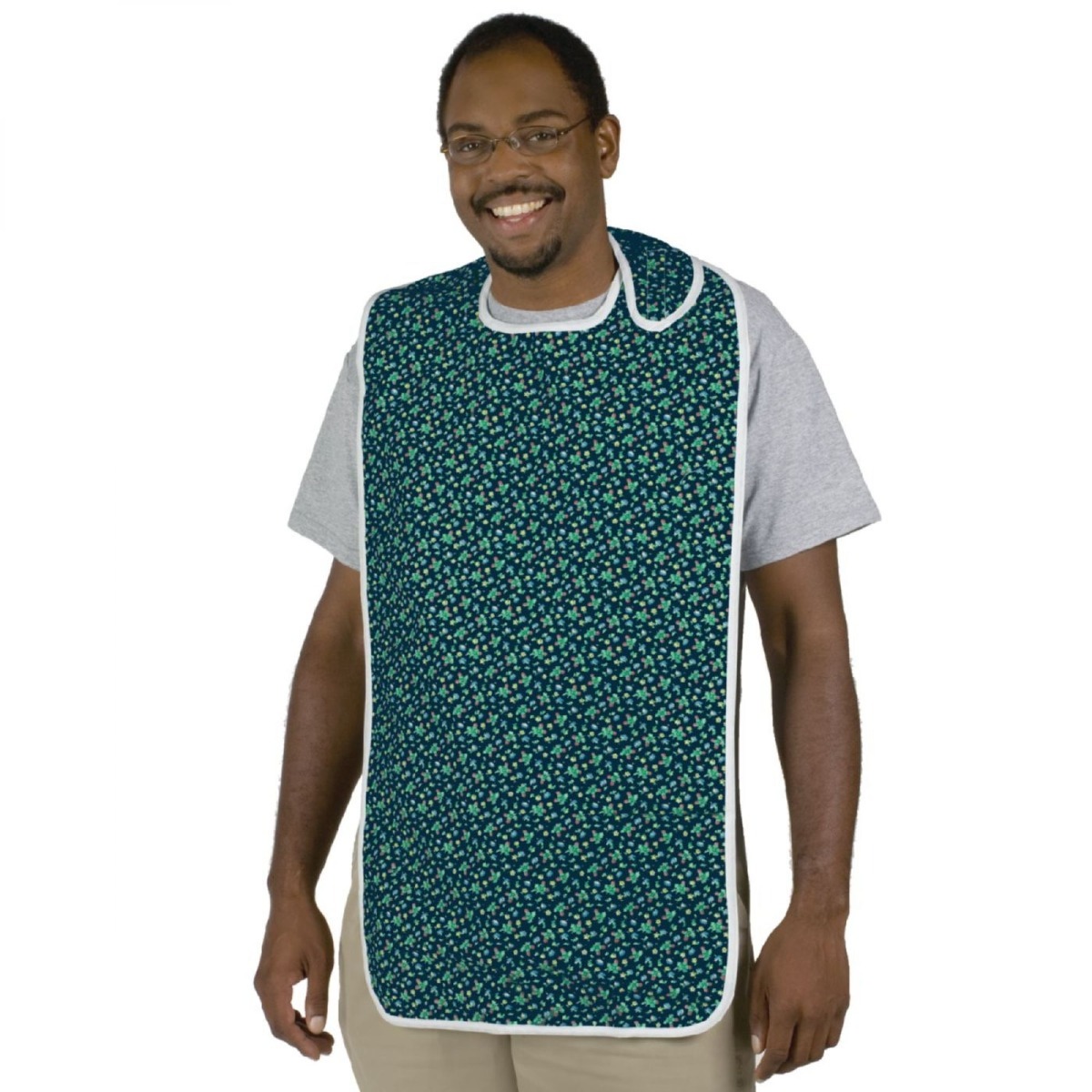
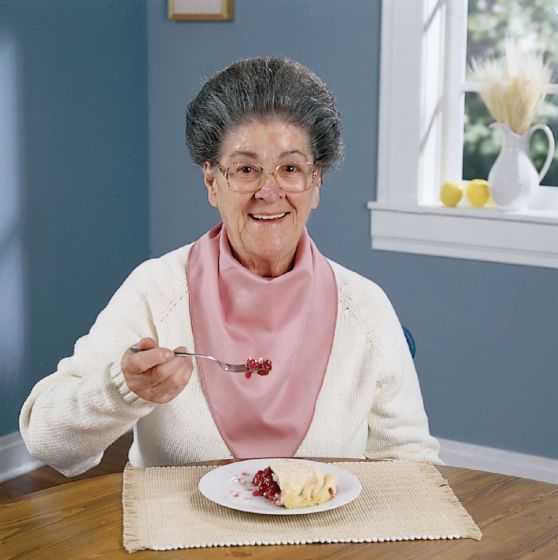
- Weighted Cups
- A weighted cup can make drinking easier for people with coordination problems. Or opt for a weighted dining kit that includes weighted utensils, a weighted cup, a non-slip Dycem pad, and a clip-on plate guard.
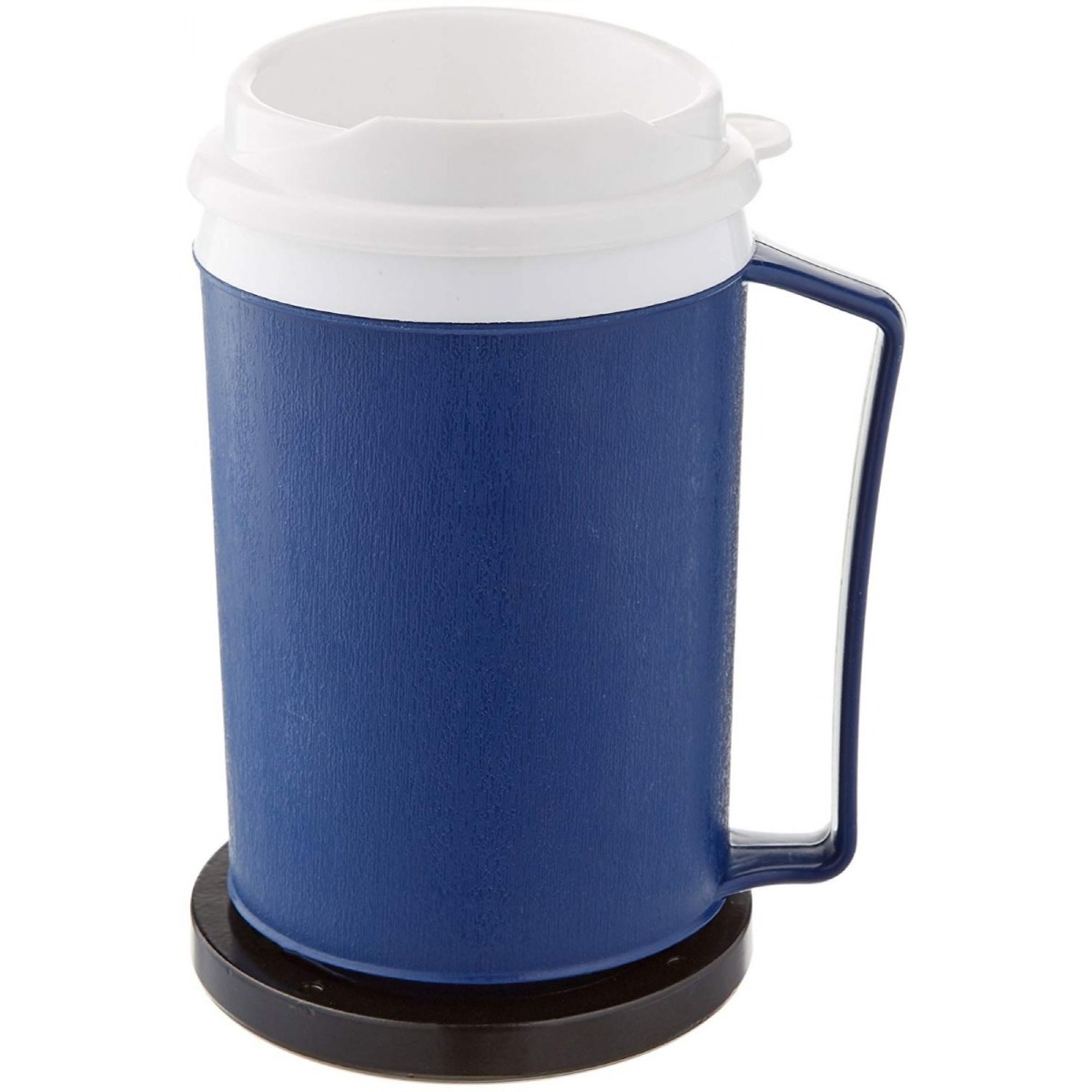
Tips
- People with HD may need reminders for when it’s time to eat a meal
- It’s important to eat enough calories to make up for the extra calories burned by chorea
- Adaptive aids, like weighted utensils, self-leveling spoons, and universal cuffs can make it easier to eat independently while limiting mess
- Severe chorea can cause issues when sitting at the table. Placing a chair against the wall and moving the table as needed helps prevent the chair from sliding. Adding foam padding to the edge of the table helps prevent bruising from severe chorea
- To reduce distractions and prevent spills, face the person with HD away from distractions like other diners
- If you’re worried about dropping food while dining out, ask to be seated in a quieter area of the restaurant and choose a meal that’s easier to eat (penne over spaghetti, softer foods, etc.). Bring your adaptive utensils, non-slip pad, and other aids with you
- If you find it tiresome to finish your meal, you can eat independently at the beginning of your meal and allow your caregiver to take over towards the end of your meal
Late Stage
In the late stage of Huntington’s disease, many people need assistance to scoop the food and bring it to their mouth. They may be able to eat finger foods independently, but require guidance by having the caregiver’s hand over their own or may need the caregiver to completely manage the task.
- Obi Robotic Feeder
- The Obi Robotic Feeder is designed for people with physical challenges. A robotic arm delivers food from four compartments. It’s easy to control via the large switch. See the Obi in action below!
Dysphagia Aids for People with Huntington’s Disease
Dysphagia means difficulty swallowing. It’s a common condition in people with HD and may lead to aspiration pneumonia and weight loss in later stages of HD. A speech and language pathologist, occupational therapist, or other healthcare professional can help you find solutions.
Some drinking aids may include:
- Dysphagia cups (also known as nosey cups)
- Cups designed for dysphagia keep your head in a neutral position while drinking (instead of tipping your head back). This helps reduce the risk of aspiration while drinking
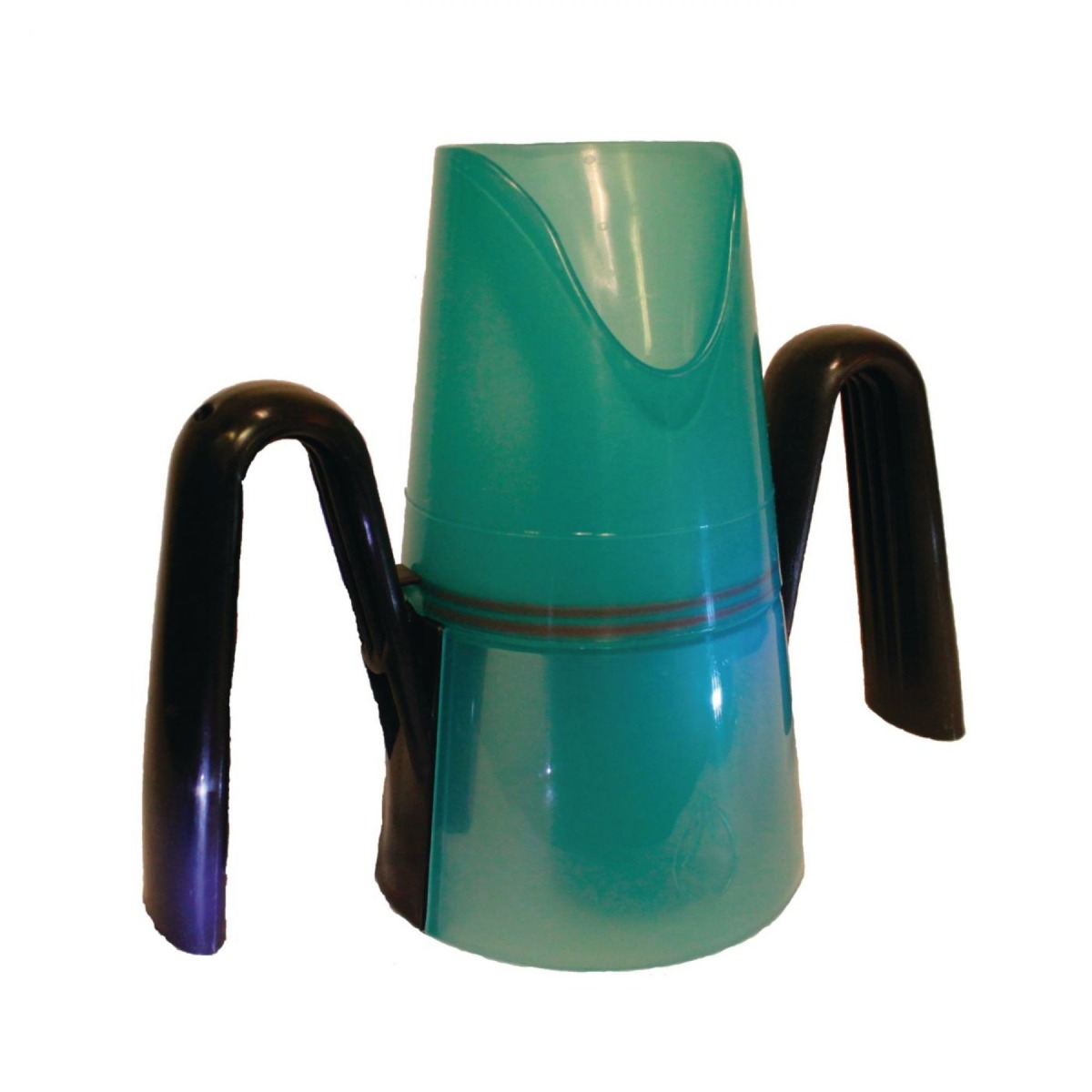
- Liquid Thickener
- Thick liquids may also help you manage dysphagia. You can use a thickener on existing drinks and soups. Choose between a can of powder, a gel pump, or individual powder packets.
- You may also need a cup that caregivers can use to feed people with dysphagia that accomodate the thickened liquids
- You can also thicken different types of smoothies using bananas or avocados or thicken soups using instant mashed potatoes or instant baby rice cereal
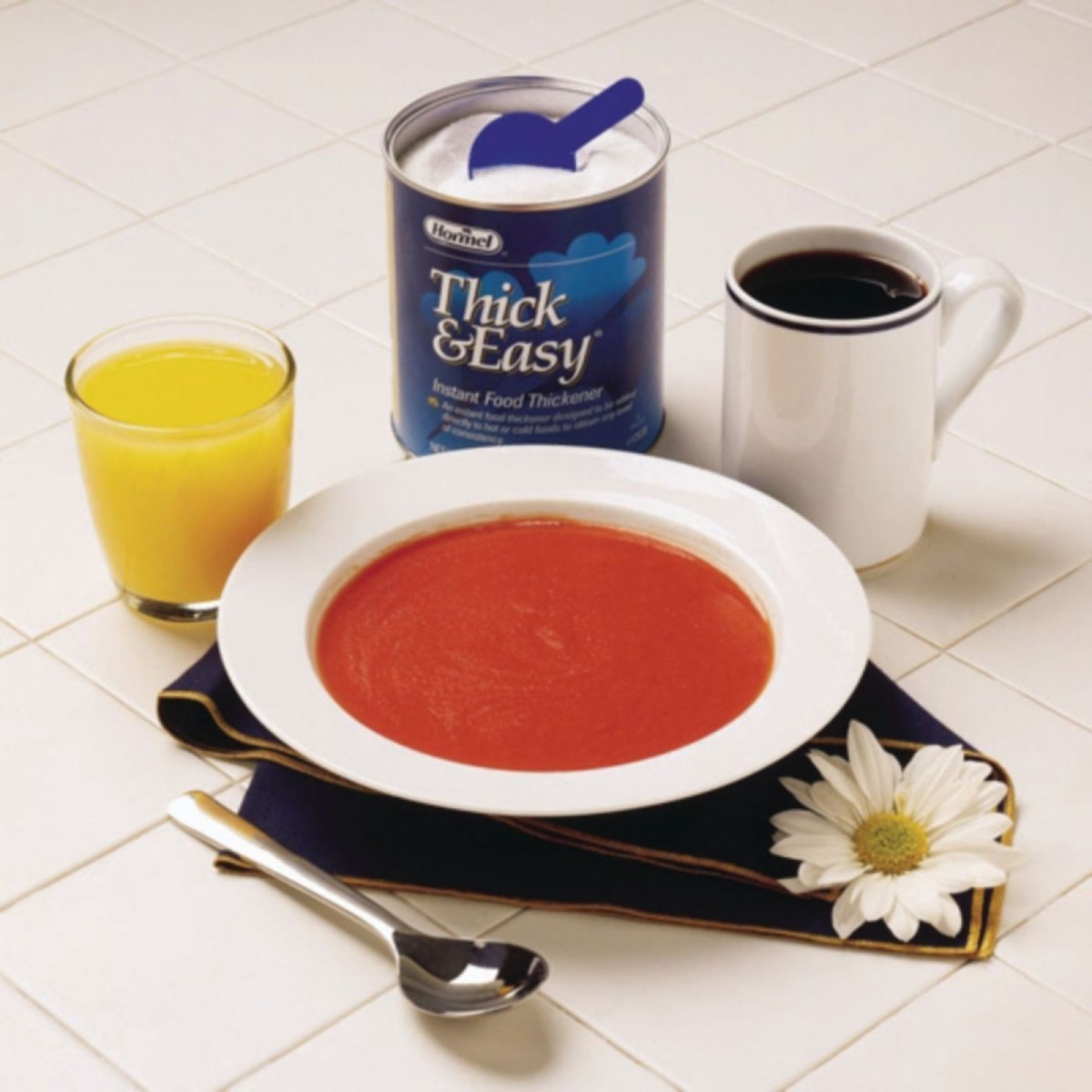
Nutrition and Huntington’s Disease
People with Huntington’s disease may experience weight loss during the mid and late stages due to a variety of factors including, burning extra calories due to chorea, difficulties using utensils, and other factors. A nutritionist or healthcare professional can ensure you’re meeting your nutritional and calorie needs.
If you need to eat more nutrient dense foods, here are some options:
- Avocados
- Smooth nut butters
- Rich soups (think clam chowder or tomato bisque)
- Mashed sweet potatoes
- Hot cereals mixed with fruit purees
Do you have additional questions about living with Huntington’s disease?
For additional answers to questions about Huntington’s disease and meals, contact a speech language pathologist, occupational therapist, or other medical professional.
Learn more about Huntington’s disease in these articles…
- Huntington's Disease Overview: Causes, Symptoms, & More
- 8 Bathing & Dressing Aids for Huntington’s Disease
- Huntington’s Disease: Managing Contractures
- Huntington’s Disease: Mobility Aids for Every Stage
- Helpful Transfer Aids for People with Huntington's Disease
- Fall Prevention for People With Huntington's Disease
References
- Medical News Today. (n.d.). What you need to know about Huntington's disease. Retrieved from https://bit.ly/2UUwqyl
- Huntington’s Disease Society of America. (n.d.). Overview of Huntington’s Disease. Retrieved from https://bit.ly/3dQVzCU
- Mayo Clinic Staff. (2018). Huntington’s disease. Retrieved from https://mayocl.in/3aEyrp8
- Huntington’s Disease Society of America. (2016). A Caregiver Guide for HD Families. Retrieved from https://bit.ly/2yv2MbB
- European Huntington’s Disease Network. (2012). Occupational Therapy for People with Huntington’s Disease: Best Practice Guidelines. Retrieved from https://bit.ly/2wdB4PS
Medical Disclaimer: The information provided on this site, including text, graphics, images and other material, are for informational purposes only and are not intended to substitute for professional medical advice, diagnosis or treatment. Always seek the advice of your physician or other healthcare professional with any questions or concerns you may have regarding your condition.

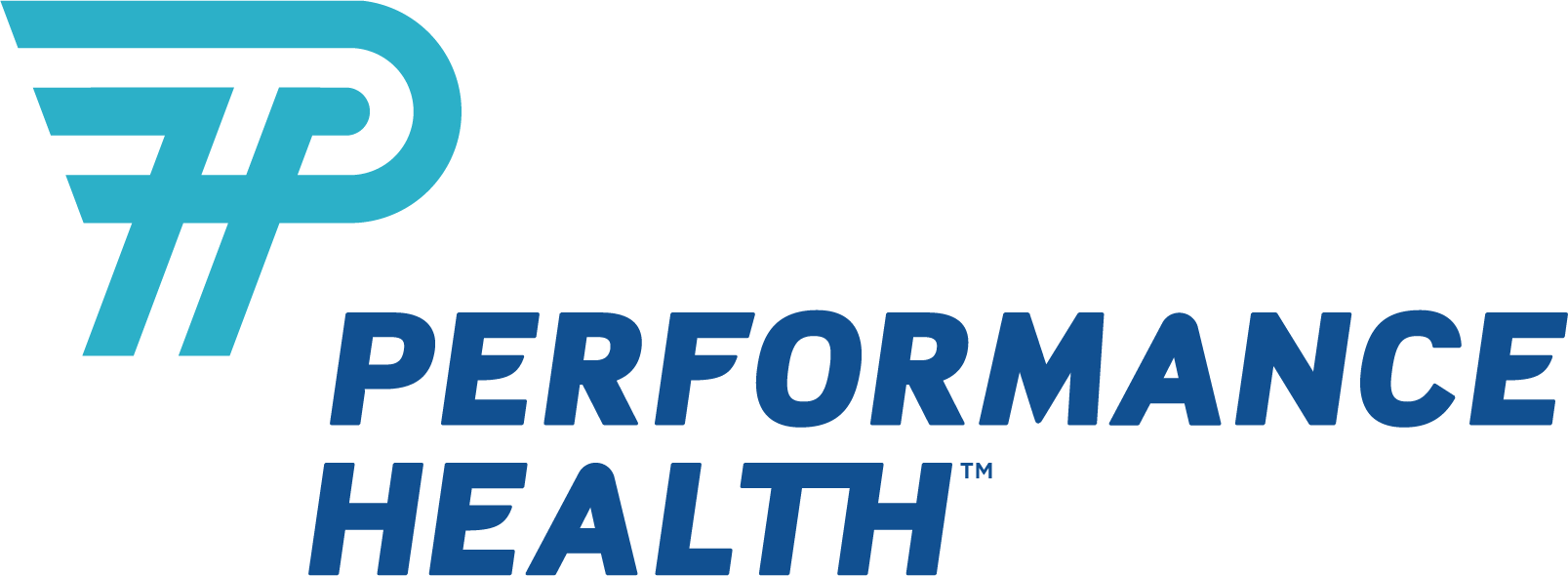






 France
France Australia
Australia

